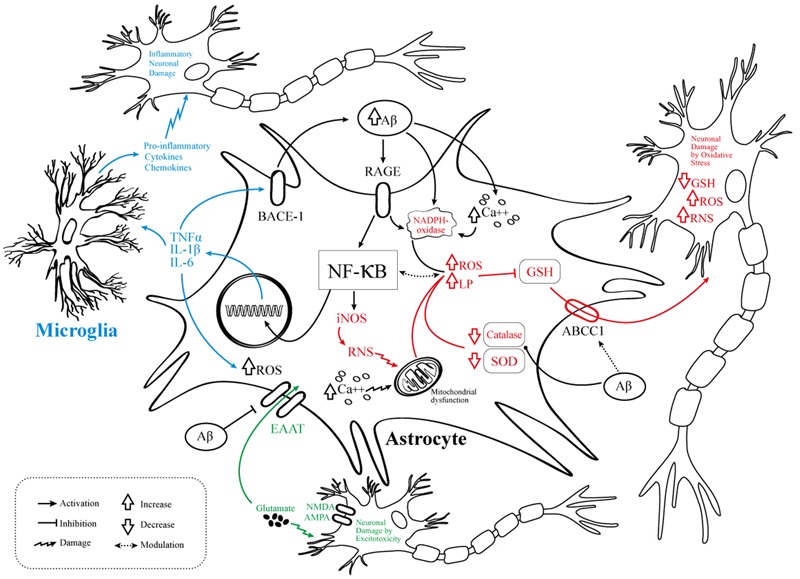FIGURE 1.

Pathophysiological events involving astrocytes in AD. Schematic representation of the molecular mechanisms linking the NF-κB pathway activation to AD pathogenesis. OS, abnormal neuroinflammatory response, and excitotoxic neuronal damage are related to several pathways of astrocyte dysfunction. In black are the elements common to the three mechanisms, namely the Aβ/RAGE/NF-kB interaction. In blue are the elements related to neuroinflammation. In red the elements related to OS. In green the elements related to neurotoxicity/excitotoxicity. Aβ, amyloid-beta; RAGE, receptor for advanced glycation products; NF-κB, nuclear factor kappa-light-chain-enhancer of activated B cells; iNOS, inducible nitric oxide synthase; RNS, reactive nitrogen species, ROS, reactive oxygen species; LP, lipid peroxidation; TNFα, tumor necrosis factor alpha; IL, interleukin; GSH, glutathione; SOD, superoxide dismutase; EAAT, excitatory amino acid transporter; BACE1, beta-secretase 1; NMDA, N-methyl-D-aspartate receptor; AMPA, α-amino-3-hydroxy-5-methyl-4-isoxazolepropionic acid; NADPH oxidase, nicotinamide adenine dinucleotide phosphate oxidase; Ca++, calcium; ABCC1, ATP-binding cassette subfamily C member 1.
